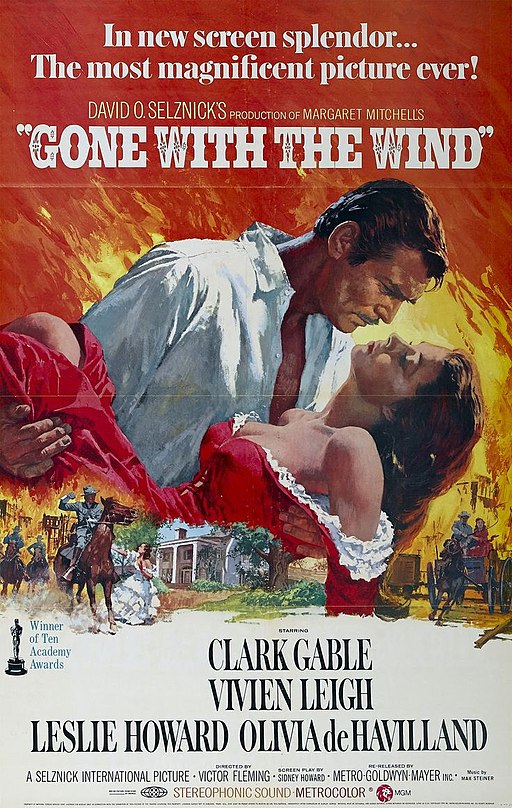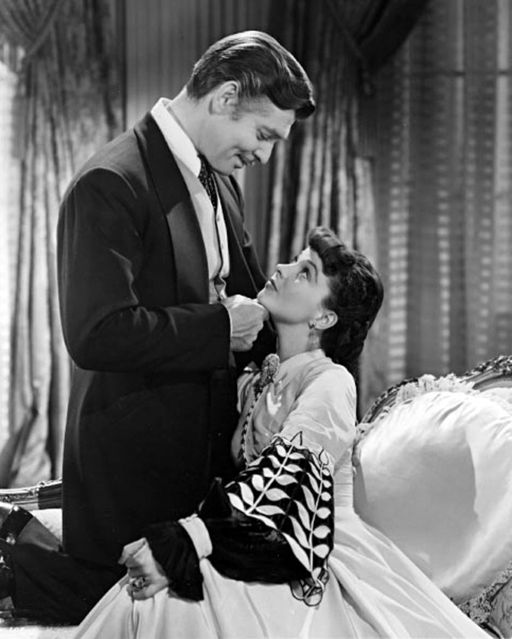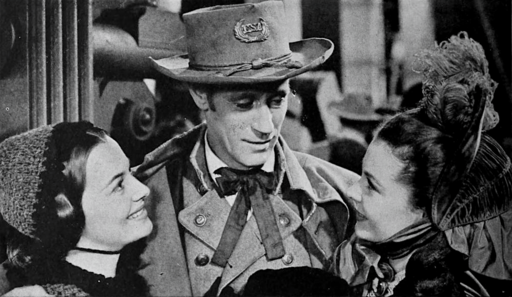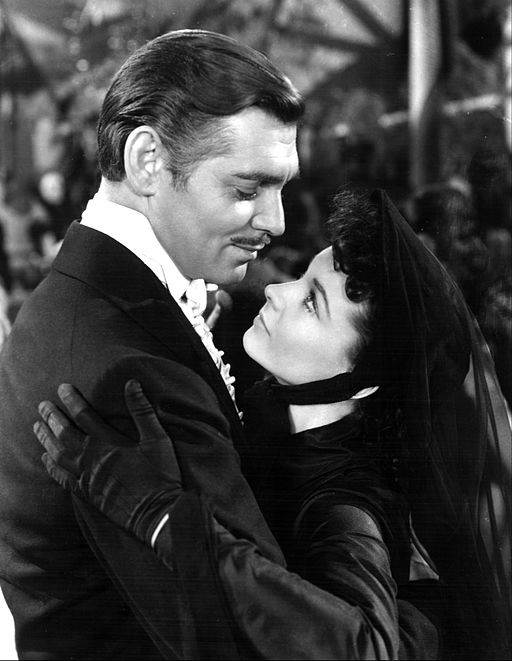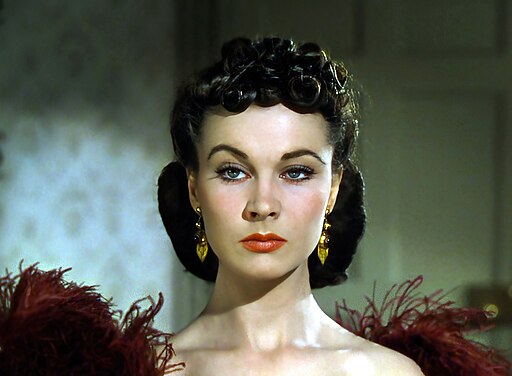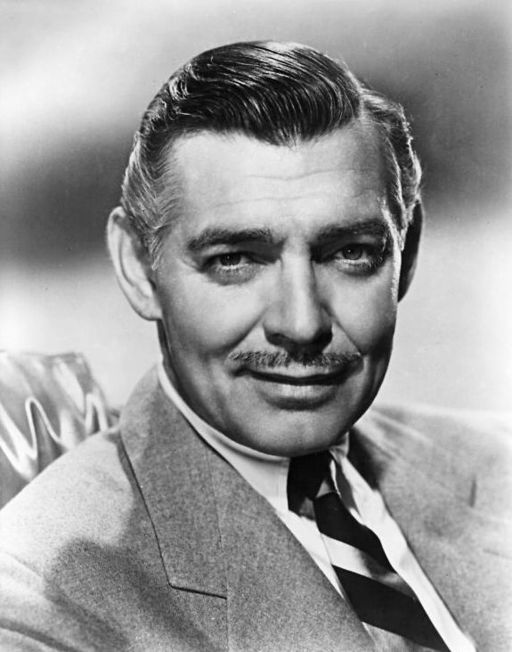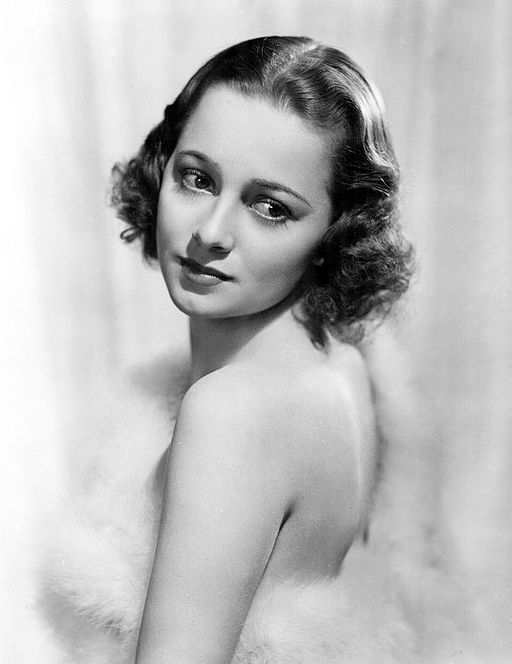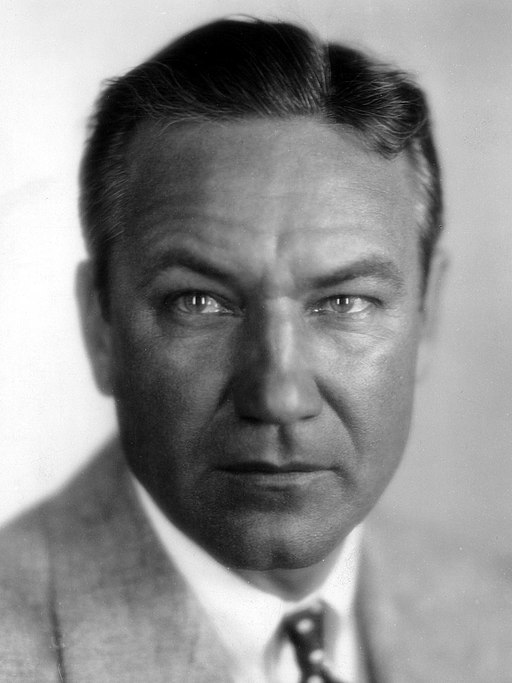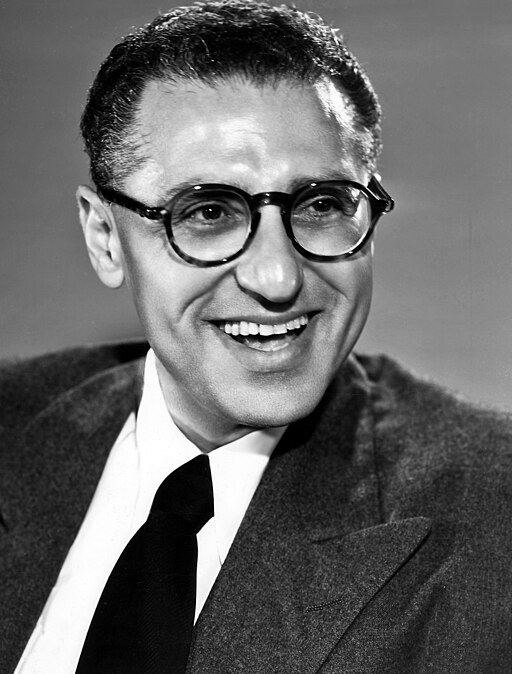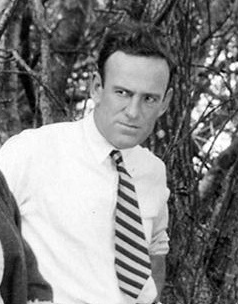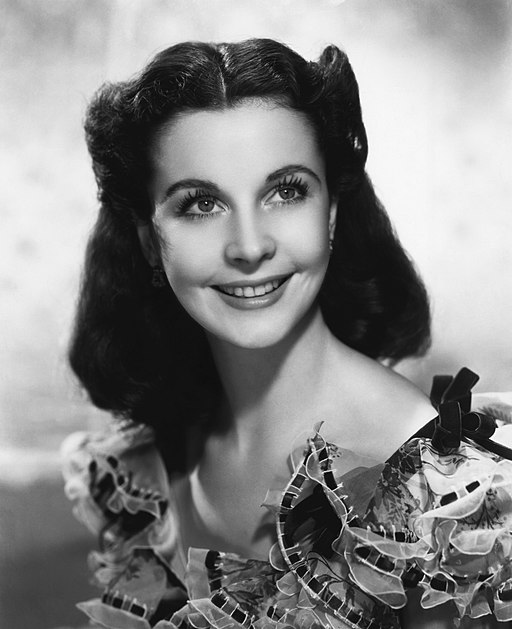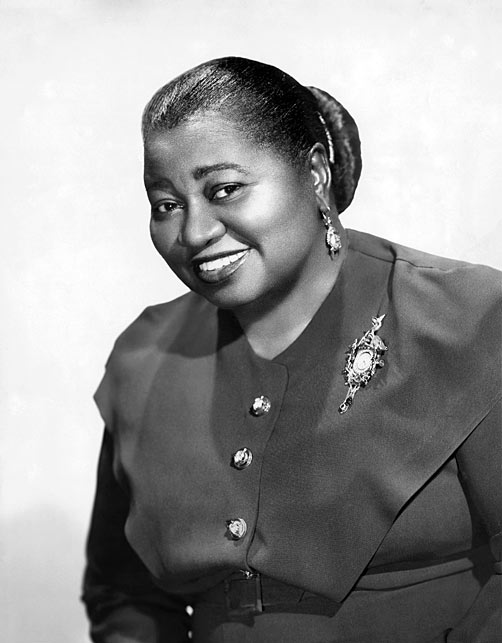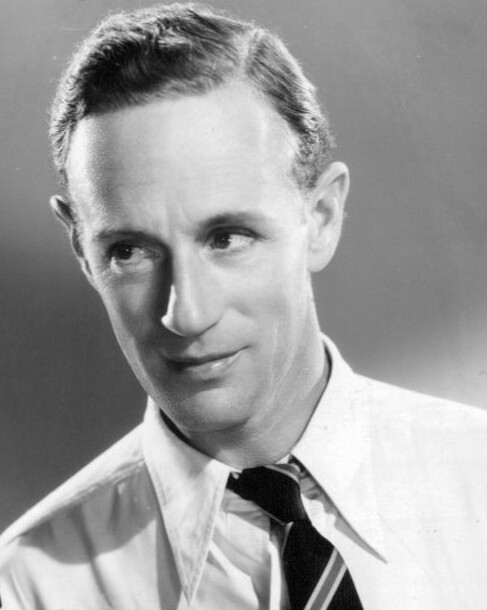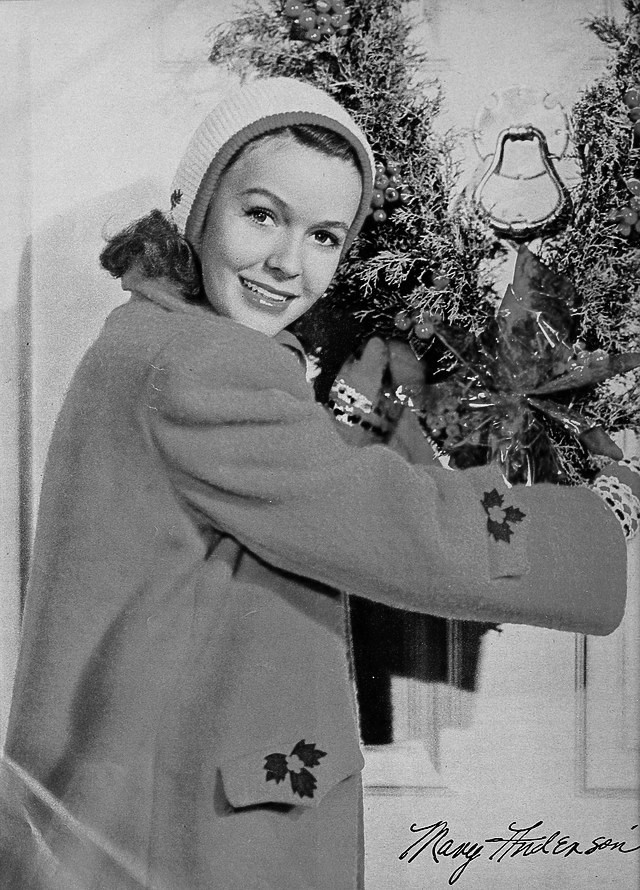Gone With the Wind - 1939
back| Released by | Loew's Inc. |
| Director | Victor Fleming, George Cukor and Sam Wood |
| Producer | David O. Selznick |
| Script | Screenplay by Sidney Howard, adapted from the novel by Margaret Mitchell |
| Cinematography | Ernest Haller and Lee Garmes |
| Music by | Max Steiner |
| Running time | 238 minutes |
| Film budget | $3.85 million |
| Box office sales | $390 million |
| Main cast | Clark Gable - Vivien Leigh - Leslie Howard - Olivia de Havilland - Hattie McDaniel |
Gone With the Wind
One of Hollywood’s most Iconic Movies ever
"Gone with the Wind" is a sweeping epic set against the backdrop of the American Civil War and Reconstruction era. It follows the story of Scarlett O'Hara (Vivien Leigh), a headstrong Southern belle, and her tumultuous relationships with Ashley Wilkes (Leslie Howard) and Rhett Butler (Clark Gable).
The film is renowned for its grand scale, lavish production, and portrayal of the Old South's decline. It won multiple Oscars, including Best Picture, and Hattie McDaniel's win as the first African American Oscar recipient was historic.
Related
Gone With the Wind – 1939
"Gone with the Wind" is a sweeping epic set against the backdrop of the American Civil War and Reconstruction era. This 1939 film, directed by Victor Fleming, George Cukor, and Sam Wood, is renowned for its grand scale, lavish production, and complex characters. It's based on the 1936 novel by Margaret Mitchell.
Summary:
The story primarily revolves around the fiery and determined Scarlett O'Hara (Vivien Leigh), the daughter of a plantation owner in Georgia. Scarlett is in love with Ashley Wilkes (Leslie Howard), who marries his cousin Melanie Hamilton (Olivia de Havilland). In response, Scarlett marries Melanie's brother, though her heart remains with Ashley.
The narrative progresses through the turmoil of the Civil War and the subsequent Reconstruction, showing the severe impacts on the Southern way of life. Scarlett's indomitable spirit sees her through the war's hardships, the loss of her first husband, and the struggle to keep her family's plantation, Tara, afloat.
Scarlett meets Rhett Butler (Clark Gable), a charming and cunning blockade runner. Their relationship is complex and tumultuous, marked by passion, conflict, and deep mutual understanding. They eventually marry, but their union is fraught with difficulties, including the death of their daughter and Scarlett's ongoing obsession with Ashley.
The film explores themes of love, war, survival, and the transformation of the South. Scarlett's journey is one of resilience and adaptability, embodying the old South's struggle and eventual downfall.
Analysis:
"Gone with the Wind" is notable for its technical achievements and its storytelling. The film's use of Technicolor was revolutionary for its time, contributing to the visual grandeur. The burning of Atlanta scene remains one of the most iconic in cinema history, showcasing the film's scale and technical prowess.
Thematically, the film has been both praised and criticized. Scarlett O'Hara is a complex character, displaying strength, stubbornness, and resourcefulness, making her one of the most compelling female characters in cinema. However, the film has been critiqued for its romanticized depiction of the antebellum South and its portrayal of slavery and African Americans, which reflect the racial attitudes of its time rather than a more accurate historical perspective.
The film's narrative structure, character development, and use of melodrama set a standard for epic storytelling in cinema. Max Steiner's score adds to the emotional depth and grandeur of the film.
In summary, "Gone with the Wind" is a landmark in American cinema for its narrative scope, visual spectacle, and complex characterizations. While its historical and cultural depictions are contentious, its influence on filmmaking and popular culture is undeniable.
Official Trailer "Gone With the Wind":
Full Cast of Gone With the Wind:
- Clark Gable as Rhett Butler
- Vivien Leigh as Scarlett O'Hara
- Leslie Howard as Ashley Wilkes
- Olivia de Havilland as Melanie Hamilton
- Hattie McDaniel as Mammy
- Thomas Mitchell as Gerald O'Hara
- Barbara O'Neil as Ellen O'Hara (Scarlett's mother)
- Evelyn Keyes as Suellen O'Hara
- Ann Rutherford as Carreen O'Hara
- George Reeves as Brent Tarleton
- Fred Crane as Stuart Tarleton
- Oscar Polk as Pork (Gerald O'Hara's servant)
- Butterfly McQueen as Prissy
- Victor Jory as Jonas Wilkerson
- Mary Anderson as Maybelle Merriwether
- Everett Brown as Big Sam (foreman at Tara)
- Howard C. Hickman as John Wilkes
- Alicia Rhett as India Wilkes
- Rand Brooks as Charles Hamilton
- Carroll Nye as Frank Kennedy
- Laura Hope Crews as Aunt Pittypat Hamilton
- Eddie Anderson as Uncle Peter (Aunt Pittypat's coachman)
- Harry Davenport as Dr. Meade
- Leona Roberts as Mrs. Meade
- Jane Darwell as Mrs. Merriwether
- Ona Munson as Belle Watling
The Complicated Direction of “Gone With the Wind”:
The direction of "Gone with the Wind" (1939) is a fascinating study in filmmaking, particularly because it involved the collaborative efforts of three directors: Victor Fleming, George Cukor, and Sam Wood. Each of these directors brought their unique vision and style to the film, contributing to its overall grandeur and depth.
Victor Fleming's Contribution:
- Fleming, who is often credited as the primary director, brought a robust, masculine sensibility to the film.
- His expertise in directing action sequences was evident in the more dramatic scenes, such as the burning of Atlanta, which is still hailed as one of the most spectacular sequences in film history.
- Fleming was adept at handling the epic scale of the film, from vast battle scenes to the intimate emotional turmoil of the characters.
George Cukor's Role:
- Cukor, who was initially the director before being replaced by Fleming, worked primarily on the early stages of the film.
- Known for his skill in directing actresses, Cukor's influence is seen in the nuanced performances, particularly of Vivien Leigh and Olivia de Havilland.
- His attention to character development and emotional depth helped in establishing the complex interpersonal dynamics that drive the film's narrative.
Sam Wood's Involvement:
- Wood stepped in to direct for a brief period when Fleming took a short break.
- Although his time on the project was short, Wood was a competent handler of the film's narrative pacing and continuity.
Collaborative Direction:
- The collaboration of these three directors resulted in a film that was grand in scale yet intimate in character portrayal.
- The film's direction excels in balancing the sweeping historical backdrop with the intricate personal stories of love, loss, and survival.
Challenges and Achievements:
- Managing such a vast production was a significant challenge. The directors had to deal with a demanding shooting schedule, a sprawling script, and the expectations of adapting a hugely popular novel.
- The film’s direction was successful in maintaining coherence and emotional impact despite these challenges.
- The directors' ability to draw out compelling performances from the cast while managing large-scale action and intricate set pieces is noteworthy.
In summary, the direction of "Gone with the Wind" is a testament to the skills of Fleming, Cukor, and Wood. Their combined efforts resulted in a film that not only captured the essence of Margaret Mitchell's novel but also pushed the boundaries of what was technically and artistically possible in cinema at the time. The directors' varied strengths complemented each other, resulting in a film that remains a landmark in Hollywood's history.
Analysis of the Performance of Cark Gable as Rhett Butler:
Clark Gable's performance in "Gone with the Wind" as Rhett Butler is one of the most iconic in the history of American cinema. Gable brought a mix of charisma, complexity, and depth to the character, making Rhett Butler a memorable and multifaceted figure.
Charisma and Screen Presence:
- Gable's natural charisma was key to his portrayal of Rhett Butler. He exuded a confident, almost nonchalant charm that perfectly suited the character's devil-may-care attitude.
- His screen presence was commanding, capturing the audience's attention whenever he appeared. This presence was essential for a character who needed to be both larger-than-life and believably human.
Complex Characterization:
- Gable's Rhett Butler was not a straightforward hero. He was a complex, sometimes contradictory figure, and Gable navigated these complexities with skill.
- He brought out the character's cynicism and self-serving pragmatism, while also revealing the underlying honor and tenderness, particularly in his interactions with Scarlett O'Hara (Vivien Leigh) and their daughter, Bonnie Blue.
- Gable's portrayal showed a man torn between his desire for a life of freedom and his deep love for Scarlett, even when that love was not fully reciprocated.
Chemistry with Co-Stars:
- Gable's chemistry with Vivien Leigh was electric. The dynamic between Rhett and Scarlett was a driving force of the film, and Gable's interactions with Leigh were both intense and nuanced.
- The push-and-pull nature of Rhett and Scarlett's relationship was effectively portrayed, with Gable deftly handling the transitions from charm to frustration, passion to indifference.
Emotional Range:
- Gable demonstrated a significant emotional range in the film. He was able to convey a sense of carefree arrogance in one scene and profound vulnerability in the next.
- His performance in the latter part of the film, especially after the death of his daughter, was particularly poignant. Gable's depiction of Rhett's grief and disillusionment added a deep emotional layer to the character.
Legacy and Impact:
- Gable's performance helped define the archetype of the charming rogue in cinema. His portrayal of Rhett Butler has been influential in film and popular culture.
- He brought a mix of masculinity, sensitivity, and complexity to the role, which was somewhat atypical for leading men in that era of Hollywood.
Performance of Vivien Leigh as Scarlet O’Hara:
Vivien Leigh's performance as Scarlett O'Hara in "Gone with the Wind" is not only a highlight of her career but also a defining moment in cinematic history. Leigh's portrayal of Scarlett is a masterclass in character development and emotional depth, bringing to life one of literature's most complex heroines.
Range and Depth:
- Leigh demonstrated exceptional range in her portrayal of Scarlett. She convincingly transitioned from a spoiled, headstrong Southern belle to a resilient, determined woman facing the harsh realities of war and loss.
- Her ability to convey Scarlett's internal conflicts—her love for Ashley Wilkes (Leslie Howard) and Rhett Butler (Clark Gable), her fierce determination to survive and protect Tara, her family's plantation—was remarkable.
Emotional Intensity:
- Leigh's performance was marked by intense emotional depth. She captured the fiery spirit of Scarlett, her capriciousness, and her vulnerability.
- Notably, Leigh conveyed Scarlett's growth over time, especially in scenes depicting her struggles during and after the Civil War. Her portrayal of Scarlett's desperation, grief, and ultimately, her indomitable will to survive, was compelling.
Chemistry with Co-Stars:
- Leigh's chemistry with Clark Gable (Rhett Butler) was electric and nuanced. She skillfully navigated the complex relationship between Scarlett and Rhett, characterized by passion, conflict, and a deep, if often unacknowledged, understanding of each other.
- Her interactions with other key characters, like Melanie Hamilton (Olivia de Havilland), also demonstrated her ability to reflect Scarlett's multifaceted nature—from rivalry and jealousy to deep, albeit grudging, respect and affection.
Physicality and Expressiveness:
- Leigh's physical expressiveness added to the authenticity of her performance. Her facial expressions, body language, and use of her eyes conveyed a wide range of emotions, often without the need for dialogue.
- Her transformation from the coquettish young Scarlett to the hardened, yet still hopeful, woman by the film's end was as much physical as it was emotional.
Legacy and Impact:
- Vivien Leigh's Scarlett O'Hara became an iconic character in film history, thanks in large part to Leigh's powerful performance. She brought complexity and humanity to a character that could easily have been unlikable in less capable hands.
- Her Oscar-winning performance set a high standard for portraying strong, multidimensional female characters in cinema.
Famous Lines from Gone With the Wind:
"Frankly, my dear, I don't give a damn." - Rhett Butler
- This iconic line is delivered by Rhett Butler to Scarlett O'Hara in the film's final scene. It's famous for its blunt delivery and the way it encapsulates Rhett's frustration and resignation.
"After all, tomorrow is another day!" - Scarlett O'Hara
- This line, full of optimism and resilience, is Scarlett's final line in the movie and reflects her unyielding determination to face whatever challenges come her way.
"As God is my witness, I'll never be hungry again." - Scarlett O'Hara
- Spoken by Scarlett while standing on a hill at Tara, this line represents her fierce determination to survive and protect her home at any cost.
"I don't know nothin' 'bout birthin' babies!" - Prissy
- This line, delivered by Prissy during a crucial moment, is one of the film's more memorable comedic moments, despite its portrayal of racial stereotypes of the time.
"You should be kissed and often, and by someone who knows how." - Rhett Butler
- A line that showcases Rhett's charming yet bold demeanor, indicative of his relationship with Scarlett.
"I can't think about that right now. If I do, I'll go crazy. I'll think about that tomorrow." - Scarlett O'Hara
- This quote reflects Scarlett's coping mechanism throughout the film, focusing on immediate survival while postponing dealing with her problems.
"I'll never go hungry again." - Scarlett O'Hara
- Another line underscoring Scarlett's determination to endure and overcome the hardships she faces.
TRIVIA
A] The Grand Staircase
The grand staircase in "Gone with the Wind" is one of the film's most iconic set pieces, symbolizing both the opulence of the Old South and the personal dramas of the characters. Here are some key aspects:
- Symbol of Southern Grandeur: The staircase at Tara, the O'Hara family plantation, epitomizes the lavishness and elegance associated with the antebellum South. Its grand design reflects the wealth and social status of the plantation owners.
- Location for Key Scenes: The staircase serves as a backdrop for several pivotal scenes in the film. It is where Scarlett O'Hara makes her dramatic entrance, descending in her opulent dress, capturing the attention of everyone, including Rhett Butler. This scene establishes Scarlett's character as both a belle of beauty and a woman of determination.
- Architectural and Cinematic Significance: From a cinematic standpoint, the staircase allowed for dramatic shots and staging. Its expansive design provided a visual spectacle, adding depth and grandeur to the scenes shot there. The way characters ascend and descend the stairs often mirrors their changing fortunes and emotional states throughout the film.
- Metaphorical Implications: The staircase also serves a metaphorical purpose. It represents the rise and fall of the characters' fortunes, particularly Scarlett's. Her journey up and down these stairs parallels her journey through the trials of the Civil War and Reconstruction.
- Craftsmanship and Design: The design of the staircase showcased the film's commitment to detailed and authentic set design, contributing to the movie's overall visual impact. Its craftsmanship was a testament to the high production values that "Gone with the Wind" became known for.
B] The Iconic Gone With the Wind Lamps:
The "Gone with the Wind" lamp is a type of parlor lamp named after the film due to its similarity to lamps used in the movie. These lamps, however, predate the film, originating in the Victorian era. Here are some key aspects:
- Design and Appearance: The Gone With the Wind lamp is known for its ornate design and often features hand-painted scenes, flowers, or other decorative motifs on a rounded glass "globe" or shade. The base is typically metal, and the lamp has a glass chimney that extends out of the top.
- Popularity and Production: These lamps became particularly popular in the United States during the late 19th and early 20th centuries. Various companies produced them, and they were considered a symbol of elegance and good taste in home decor.
- Association with the Film: Although these lamps were not specifically designed for "Gone with the Wind," their use in the film's set design linked them to the movie. The film's portrayal of Southern elegance and opulence during the Civil War era made these lamps symbolic of that period's aesthetic.
- Conversion to Electricity: Originally, these lamps were oil-based, but many were later converted to electricity as times changed and electric lighting became standard.
- Collectible Items: Today, original GWTW lamps are collectible antiques. Their value depends on factors like age, condition, manufacturer, and the intricacy of their design.
- Cultural Significance: The GWTW lamp is more than just a lighting instrument; it's a piece of cultural history that captures a specific aesthetic from a bygone era. Its association with "Gone with the Wind" has further cemented its place in American decor history.
Awards and Recognition:
"Gone with the Wind" (1939) is one of the most celebrated films in the history of cinema, particularly noted for its achievements during the 12th Academy Awards. Here is a comprehensive overview of the awards and nominations it received:
Academy Awards (1940):
- Best Picture (Won) - Produced by David O. Selznick
- Best Director (Won) - Victor Fleming
- Best Actress (Won) - Vivien Leigh for playing Scarlett O'Hara
- Best Supporting Actress (Won) - Hattie McDaniel for playing Mammy, making her the first African American to win an Oscar
- Best Adapted Screenplay (Won) - Sidney Howard (posthumously)
- Best Art Direction (Won) - Lyle Wheeler
- Best Cinematography, Color (Won) - Ernest Haller and Ray Rennahan
- Best Film Editing (Won) - Hal C. Kern and James E. Newcom
- Best Actress (Nominated) - Olivia de Havilland for playing Melanie Hamilton
- Best Special Effects (Nominated) - Jack Cosgrove, Fred Albin, and Arthur Johns
- Best Original Score (Nominated) - Max Steiner
- Best Sound Recording (Nominated) - Thomas T. Moulton (Samuel Goldwyn SSD)
Additionally, the film received two honorary awards:
- Honorary Award for William Cameron Menzies for outstanding achievement in the use of color for the enhancement of dramatic mood in the production of "Gone with the Wind."
- Technical Achievement Award to Don Musgrave for pioneering in the use of coordinated equipment in the production "Gone with the Wind."
"Gone with the Wind" set a record for the most Oscars won by a single film at that time and remains one of the most recognized films in Academy Awards history

